Convergent scientists in history
Convergent scientists in history
What defines a convergent scientist? Who are the role models of interdisciplinary research? The following list showcases some of the most renowned contributors to convergence science, whose interdisciplinary work has shaped the landscape of medical research and opened new frontiers in the quest for better health outcomes.
There was a time when Medicine (or Modern Medicine) was all about convergence. This was because Medicine was new and could only be created from the fusion of existing disciplines.
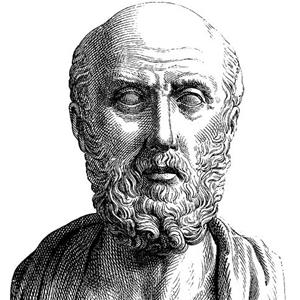
The "Father of Medicine" himself initiated Western cancer research's convergence. He was the first to describe cancer, using the term carcinos for tumours, noting their crab-like spread. Though his theory of disease — attributing cancer to an excess of black bile — differs from modern understanding, his observational approach marked a significant shift towards scientific inquiry in medicine. Importantly, Hippocrates also observed symptoms associated with diseases, such as clubbing of the fingers, which today is recognised as a potential indicator of lung cancer. His work in linking specific symptoms to underlying conditions has been vital in the evolution of diagnostic medicine, laying a groundwork that continues to inform cancer diagnosis and treatment strategies. Fascinatingly, Hippocrates achieved his work through the convergence of empirical observations, philosophy, and... Magic (Theurgy)!
Galen was a prominent physician and philosopher of the Roman Empire. He made significant contributions to the field of medicine that extended into the understanding and treatment of diseases, including cancer. His extensive work on anatomy, physiology, and pathology laid foundational knowledge for future medical practices. Although the concept of cancer was rudimentary during Galen's time, his observations and treatments of tumours contributed to the early understanding of the disease. Galen believed that an imbalance of the body's four humours (blood, phlegm, yellow bile, and black bile) was the cause of cancer, with black bile being specifically associated with malignant growths. His approach to treating tumours, often involving dietary regulation, bloodletting, and the use of complex herbal remedies, reflected the medical knowledge of his time. Despite the limitations of his era's scientific understanding, Galen's work in distinguishing between benign and malignant tumours and his surgical techniques for removing them mark important early steps in the long journey of cancer research and treatment.
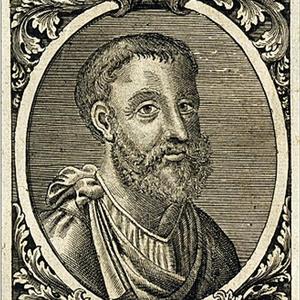

Ibn Sina, also known as Avicenna in the Western world, made substantial contributions to the field of medicine through his encyclopaedic work The Canon of Medicine. This seminal text, a cornerstone of medical education in both the Islamic world and Europe for centuries, integrated a vast array of scientific disciplines, including anatomy, physiology, pharmacology, and surgery. Ibn Sina's approach to cancer was holistic, combining his deep knowledge of herbal medicines with surgical techniques, where appropriate, to treat tumours. He was among the first to categorise tumours into benign and malignant, and his treatments often involved complex compounds of plants and minerals, reflecting his broader engagement with the natural sciences. Ibn Sina's methodology was ground-breaking in its reliance on empirical evidence and clinical observation, blending these with the philosophical underpinnings of medicine to provide a comprehensive framework for understanding and treating diseases, including cancer.
Leonardo da Vinci is widely regarded as one of the most influential polymaths in history, if not THE polymath. He excelled in multiple disciplines, including art, anatomy, engineering, and science. His contributions to medical science came through his meticulous anatomical studies. Leonardo dissected human bodies to gain a deep understanding of human anatomy, which greatly influenced medical knowledge during his time. His detailed anatomical drawings provided invaluable insights into the human body's structure and function, even though many of his findings were not widely disseminated until centuries later.
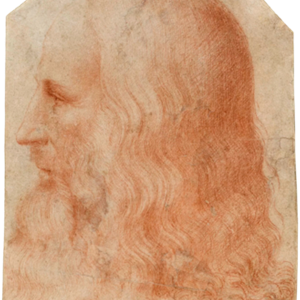
-_natuurkundige_te_delft_rijksmuseum_sk-a-957.jpg?sfvrsn=4821c0f1_2)
Antonie van Leeuwenhoek, often hailed as the "Father of Microbiology," made monumental strides across various scientific domains through his interdisciplinary research. Leeuwenhoek was not formally educated in science yet he pioneered microbiological observations that would lay the foundations for the field. His work transcended simple curiosity, bridging biology, physics, and engineering—primarily through his refinement of microscope technology. Leeuwenhoek ingeniously crafted over 500 microscopes, some magnifying objects up to 275 times, enabling him to observe bacteria, sperm cells, blood cells, and microscopic nematodes, among other entities, for the first time. His meticulous documentation and correspondence with the Royal Society opened up a previously invisible world, challenging prevailing scientific theories and contributing significantly to the understanding of biological life. Leeuwenhoek's interdisciplinary approach—melding technical skill in microscope construction with a keen observational acuity—exemplifies the profound impact that cross-disciplinary research can have on advancing human knowledge.
Before the 1970s, crossing disciplines was still seen as the norm for the most ground-breaking scientists. Convergence was shining bright on scientific discoveries.
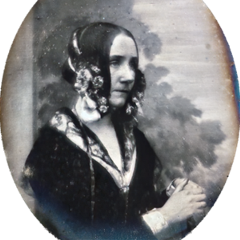
Ada Lovelace, celebrated as the first computer programmer, stands at the confluence of mathematics, technology, and literature, embodying the essence of interdisciplinary research. Lovelace was the daughter of the famed poet Lord Byron and Anne Isabella Milbanke, an avid mathematician. This blend of arts and sciences in her heritage laid the groundwork for her pioneering contributions. Lovelace's most significant work involved her collaboration with Charles Babbage on the Analytical Engine, an early mechanical general-purpose computer. Her notes on the engine included what is considered the first algorithm intended to be processed by a machine, making her the first computer programmer. Beyond merely documenting Babbage's invention, Lovelace's insights into the potential of computing extend far beyond the mathematical calculations Babbage envisaged, predicting the computer's capabilities to manipulate symbols and create music and art, hinting at the modern computer's versatile applications.
Often known as the "Lady with the Lamp", Florence Nightingale is considered the founder of modern nursing. She combined her expertise in nursing with her skills in mathematics and statistics to revolutionise healthcare practices. Nightingale used statistical methods to analyse and interpret healthcare data, demonstrating the significance of proper sanitation and hygiene in reducing mortality rates in hospitals. Her work in healthcare statistics laid the foundation for modern epidemiology and evidence-based healthcare practices.
.tmb-small.jpg?sfvrsn=62516902_2)
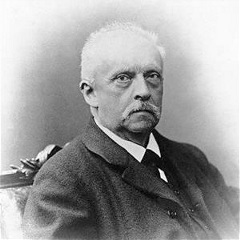
Hermann von Helmholtz was a German physician and physicist who made significant interdisciplinary contributions. His research in physics and physiology led to advancements in understanding the physiology of vision and hearing. Helmholtz developed the ophthalmoscope, a critical tool for examining the eye's interior, and conducted studies on sound perception, introducing the concept of the "resonance" theory of hearing. His work in physics also involved the conservation of energy, making him a prominent figure in both the physical and medical sciences.
Gregor Mendel, renowned as the "Father of Genetics," made pioneering contributions that bridged the disciplines of biology, mathematics, and agriculture. Through his experiments with pea plants, Mendel discovered the fundamental principles of genetic inheritance, formulating the laws of segregation and independent assortment. His innovative approach, combining careful biological experimentation with statistical analysis, revealed how traits are passed down across generations. Mendel's work laid the foundational framework for the field of genetics, influencing a wide range of scientific areas, from evolutionary biology to medical research. Despite his findings being overlooked during his lifetime, their eventual recognition transformed our understanding of biology, showcasing the profound impact of interdisciplinary research in unlocking the complexities of the natural world.
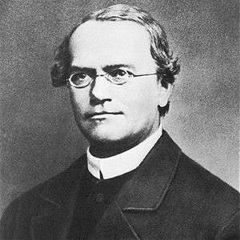
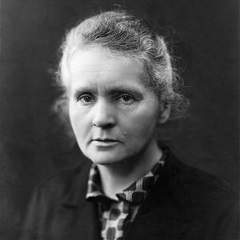
Marie Curie, a pioneering physicist and chemist, made ground-breaking interdisciplinary contributions in the field of radioactivity. Her research had far-reaching impacts on both physics and chemistry, advancing our understanding of atomic structure and nuclear processes. Curie's discovery of the elements polonium and radium not only expanded the periodic table but also paved the way for significant developments in nuclear physics and medical applications, particularly in radiation therapy for cancer treatment. Her remarkable achievements earned her two Nobel Prizes, making her the first woman to receive such honours, and her legacy continues to inspire and influence the world of science to this day.
Rita Levi-Montalcini's illustrious career in neuroscience, marked by the ground-breaking discovery of nerve growth factor (NGF), illustrates the power of interdisciplinary research in advancing our understanding of human biology. Born in Italy in 1909, she overcame the oppressive restrictions of the fascist regime to study the development of nerve cells, work that would eventually earn her the Nobel Prize in Physiology or Medicine in 1986 alongside Stanley Cohen. Her innovative use of embryology, zoology, and biochemistry to unravel the complexities of nerve growth and development not only transformed our knowledge of neurological diseases but also paved the way for future research in neurobiology and regenerative medicine. Levi-Montalcini's persistence, combined with her scientific acumen, has left an indelible mark on the world of science, serving as a beacon of inspiration for countless researchers and highlighting the significance of crossing disciplinary boundaries to solve complex biological problems.
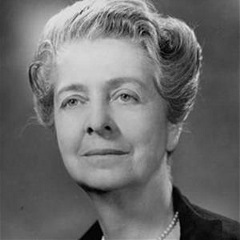

Dorothy Hodgkin, a trailblazer in the field of X-ray crystallography, made indelible contributions to the understanding of the molecular structures of key biological substances. Hodgkin's work was pivotal in determining the structures of penicillin, vitamin B12, and insulin, among others, using X-ray crystallography techniques. Her dedication to science and her innovative approach to molecular biology laid the groundwork for significant advancements in medicine and chemistry. Hodgkin's ability to decipher complex molecular structures provided invaluable insights into the nature of chemical bonds and molecular interactions, influencing fields ranging from pharmacology to biochemistry. Her work exemplified the importance of interdisciplinary research, merging physics, chemistry, and biology to solve some of the most challenging puzzles of her time.
Alan Turing, a British mathematician, and computer scientist, left a profound interdisciplinary impact on medical sciences through his pioneering contributions in computing. Throughout World War II, Turing played a vital role in breaking the German Enigma code, a feat that significantly contributed to the Allied victory. Beyond his cryptographic achievements, Turing's work on early computers and artificial intelligence laid the groundwork for numerous advancements in the medical field. His visionary ideas became instrumental in the development of modern medical imaging and analysis techniques, enabling accurate diagnosis and treatment planning. Additionally, Turing's theoretical work on morphogenesis, the process of organism development, has had a lasting influence on the field of biology. His insights into pattern formation and self-organization in biological systems have enriched our understanding of embryonic development and complex cellular interactions. Alan Turing's remarkable interdisciplinary approach has bridged the gap between mathematics, computing, and medical sciences, demonstrating the profound impact that cross-disciplinary research can have on advancing human knowledge and improving healthcare outcomes. His legacy continues to inspire scientists across disciplines to push the boundaries of knowledge and make transformative contributions to the world.
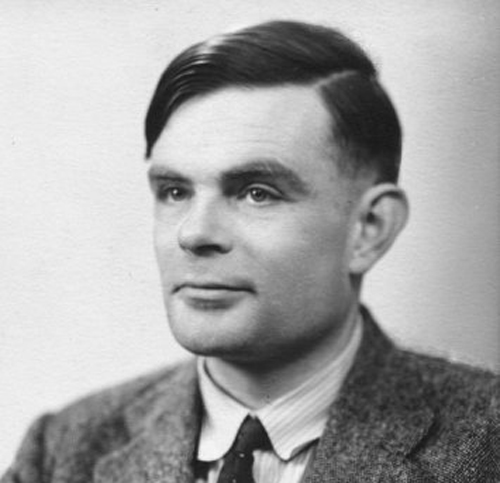
The purpose of this paper is to discuss a possible mechanism by which the genes of a zygote may determine the anatomical structure of the resulting organism. [ … ] The full understanding of the paper requires a good knowledge of mathematics, some biology, and some elementary chemistry. Since readers cannot be expected to be experts in all of these subjects, a number of elementary facts are explained, which can be found intext-books, but whose omission would make the paper difficult reading. Alan turing, The Chemical Basis of Morphogenesis (1952)
Rosalind Franklin was an English chemist whose pioneering work in X-ray diffraction was a critical piece in the puzzle of understanding the structure of DNA. Her interdisciplinary approach to studying molecules using X-ray crystallography was instrumental in producing high-resolution images of DNA fibres, revealing key insights into its helical structure. Franklin's interdisciplinary expertise in chemistry and X-ray crystallography has had a lasting impact on the fields of molecular biology and genetics. Today, she is acknowledged for her essential role in advancing our understanding of the fundamental building blocks of life.
.tmb-small.jpg?sfvrsn=f80a149e_2)
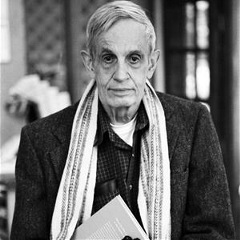
John Nash, an American mathematician and Nobel laureate, left a profound interdisciplinary legacy through his ground-breaking work in game theory. Renowned for his contributions to the field of mathematics, Nash's insights revolutionized the study of economics and social sciences. Beyond these traditional disciplines, his pioneering ideas also find valuable applications in medical economics and epidemiology. By developing game theory, Nash offered a unique perspective on decision-making processes, shedding light on how individuals and groups make choices and interact within complex systems. These principles have since been adapted to various healthcare settings, providing valuable tools for understanding and predicting patient and provider behaviour, resource allocation, and strategic planning in the medical field. Nash's interdisciplinary approach showcases the power of mathematical thinking in addressing real-world challenges, transcending traditional boundaries and enriching our understanding of various domains. His contributions continue to inspire and guide researchers in their quest for innovative solutions to societal problems.
Although slightly harder than before, convergence still thrive in medical sciences. Here are some notable examples of it.
Subra Suresh is an Indian-American engineer and scientist whose interdisciplinary work has significantly impacted the fields of materials science and biomedicine. Suresh's research has spanned various disciplines, including engineering, materials science, and biology, allowing him to contribute valuable insights to medical sciences. His work on understanding the mechanical properties of biological materials, such as cells and tissues, has advanced the field of mechanobiology, shedding light on how mechanical forces influence cellular behaviour and disease progression. Suresh's contributions have also extended to the study of blood disorders and infectious diseases, where he has applied his materials science expertise to develop novel diagnostic tools and therapies. His interdisciplinary approach has played a crucial role in advancing our understanding of biological systems and has paved the way for innovative biomedical applications.
.tmb-medium.jpg?sfvrsn=e2f3f85d_2)
.tmb-medium.jpg?sfvrsn=f2b79221_2)
Eric Lander is an accomplished American mathematician and geneticist who has left an indelible mark on the field of genomics research. His multidisciplinary expertise in mathematics and biology has been instrumental in deciphering the human genome and unravelling the complexities of genetic inheritance. Lander played a pivotal role in the Human Genome Project, a monumental international effort to sequence and map all the genes in the human genome. His ground-breaking contributions to the project have greatly advanced our understanding of genetics, paving the way for new avenues in personalised medicine, disease prevention, and targeted therapies. Lander's ability to bridge the gap between mathematics and genetics has empowered the scientific community to tackle complex biological questions and drive progress in the field of genomics.
Robert Langer's interdisciplinary research has firmly established him as a towering figure in the fields of biomedical engineering and material science. His pioneering work, based out of the Massachusetts Institute of Technology (MIT) in the United States, bridges the gap between complex biological systems and innovative engineering solutions, crafting new paradigms in drug delivery and tissue engineering. Langer's laboratory has been instrumental in the development of controlled drug delivery systems and the creation of biomaterials for applications ranging from targeted cancer therapies to regenerative medicine. His contributions have not only led to the founding of numerous biotechnology firms but have also significantly impacted countless lives through medical innovations.
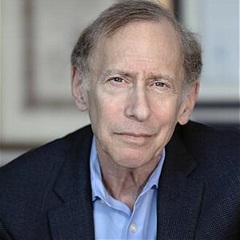
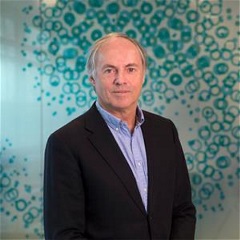
Hans Clevers, a distinguished Dutch molecular geneticist and stem cell researcher, has significantly advanced our understanding of organ development and disease through his pioneering work on organoids. His research has bridged molecular genetics and cell biology, revealing crucial insights into how tissues and cancers develop from stem cells. Clevers' work on the Wnt signaling pathway and the identification of LGR5 as a stem cell marker has been foundational in the generation of organoids, providing a novel platform for studying human health and disease.
Emmanuelle Charpentier and Jennifer Doudna are convergence scientists whose exceptional contributions to the field of gene editing and molecular biology have left a lasting impact. Both renowned microbiologists and biochemists, they co-discovered the CRISPR-Cas9 gene-editing technology. This revolutionary discovery has transformed the field of genetic engineering and opened up new possibilities for gene therapies and targeted treatments for genetic diseases. Embracing an interdisciplinary approach that blends microbiology, biochemistry, and genetics, Charpentier and Doudna's work has been instrumental in unravelling the mechanisms and potential of CRISPR-Cas9 as a powerful gene-editing tool. Their innovative research has not only paved the way for transformative applications in precision medicine, agriculture, and therapeutic interventions for genetic disorders but also inspired countless scientists to embrace interdisciplinary science in their pursuit of knowledge. Recognized with numerous prestigious awards and honours, both scientists continue to be celebrated as trailblazers in the field of gene editing and interdisciplinary research.
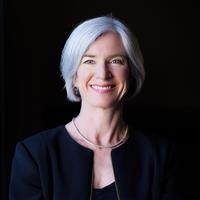
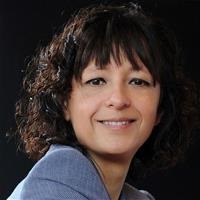
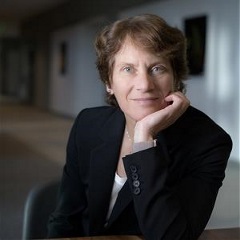
Carolyn Bertozzi is a prominent American chemist renowned for her interdisciplinary contributions to chemical biology. With expertise in chemistry and bioengineering, she has made significant advancements in the field of bioorthogonal chemistry, which enables the labelling and visualisation of biomolecules in living systems. Bertozzi's research has paved the way for innovative applications in cancer diagnostics and drug delivery, allowing for more precise and targeted therapies. Her interdisciplinary approach has played a pivotal role in bridging the gap between chemistry and biology, revolutionising medical research and opening new avenues for understanding and treating diseases.
Mehmet Toner is renowned for his impactful work at the crossroads of engineering and medical research. His remarkable achievements encompass the creation of microfluidic devices and diagnostic technologies that have revolutionised cancer detection and monitoring. Through his pioneering efforts, Mehmet Toner has showcased the profound impact of convergence science by introducing novel approaches to isolating rare cancer cells from blood samples, enabling earlier and more accurate diagnosis. His work exemplifies the transformative potential of interdisciplinary collaboration in advancing the field of point-of-care devices.

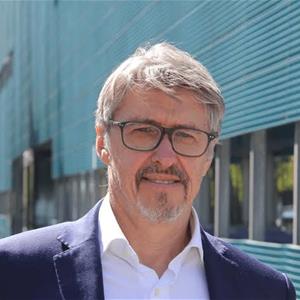
Marino Zerial is the director of the Human Technopole in Milan. He has played a pivotal role in advancing our comprehension of the molecular intricacies underlying endocytosis. His ground-breaking research on Rab GTPases as pivotal orchestrators of organelle biogenesis and membrane fusion has established fundamental principles now considered foundational in the field. Marino Zerial's contributions extend to diverse translational initiatives, spanning investigations into endocytosis's involvement in bacterial infection, the development of cutting-edge image-based high content screenings, macromolecule therapeutic delivery, and exploration of human liver diseases. His multidisciplinary approach underscores the transformative potential of his work, which reverberates far beyond conventional boundaries.
Sangeeta Bhatia is a prominent figure in convergence science, seamlessly integrating engineering, medicine, and biology. Her work spans various innovative areas, from nanotechnology-based cancer biomarker detection for early diagnosis to tissue engineering for regenerative medicine. By fusing gene therapy with nanotechnology, she has contributed to the development of targeted treatments. Sangeeta Bhatia's multidisciplinary approach exemplifies the potential of convergence science to advance healthcare.
.tmb-medium.jpg?sfvrsn=38053fec_2)
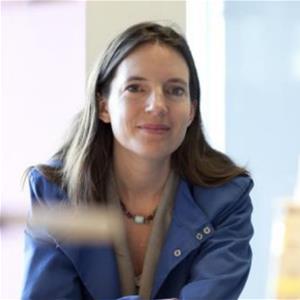
Molly Stevens has made significant strides in the crossroads of materials science, bioengineering, and regenerative medicine. Her innovative research has propelled advancements in the development of biomaterials for tissue engineering and regenerative therapies, with applications ranging from bone repair to organ transplantation. Molly Stevens' pioneering work has not only enriched our understanding of these fields but also forged transformative pathways towards personalised medicine and regenerative solutions.
.tmb-medium.jpg?sfvrsn=2052bcee_1)
Paul Workman is a leader in the field of cancer research, known for his contributions to chemical biology and drug discovery. As an eminent biochemist and pharmacologist, he has devoted his career to advancing our understanding of cancer biology and developing innovative cancer therapies. His research encompasses a wide range of disciplines, combining molecular biology, pharmacology, and drug discovery to identify novel targets and therapies for cancer treatment. As the Chief Executive of the Institute of Cancer Research (ICR) in London, Paul Workman has fostered a collaborative and interdisciplinary research environment, bringing together experts from diverse fields to tackle the complexity of cancer. Under his guidance, the ICR has made significant strides in cancer research and drug development, leading to the discovery of numerous targeted therapies that have improved the lives of cancer patients worldwide.
Ara Darzi is an eminent surgeon and researcher known for his significant contributions to interdisciplinary research. Throughout his career, he has been at the forefront of integrating medicine, technology, and policy to advance healthcare. As a pioneering figure in the field of surgery, Lord Darzi has introduced innovative techniques and technologies that have revolutionized surgical practice, leading to improved patient outcomes. Beyond the operating theatre, he has also played a vital role in shaping healthcare policies, advocating for evidence-based approaches and patient-centred care. His expertise in both medicine and public policy has garnered international recognition, positioning him as a global thought leader in healthcare reform. As a mentor and educator, Lord Darzi continues to inspire the next generation of researchers and medical professionals to embrace interdisciplinary collaboration to address complex challenges in healthcare. His visionary approach to convergence science has left a lasting impact on the medical community and beyond, shaping the future of medicine with transformative interdisciplinary research.

